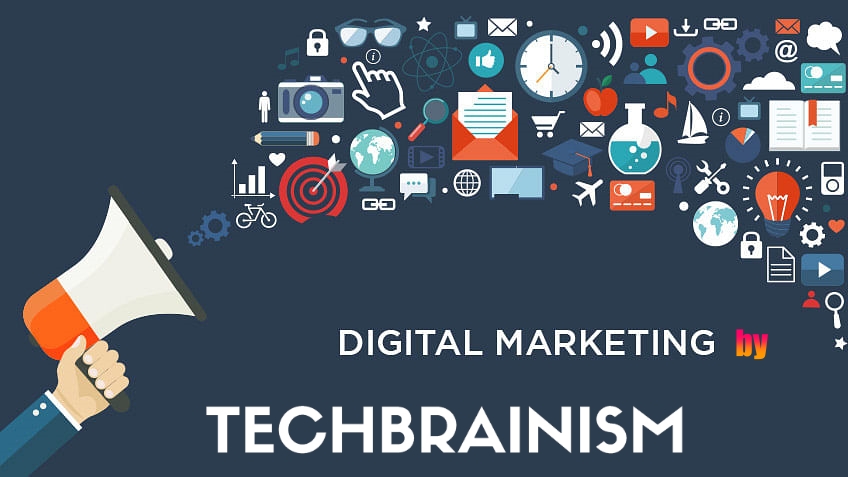Table of Contents
ToggleWhat is the definition of digital marketing?
All marketing operations that take place on the internet are referred to as digital marketing, often known as online marketing. To engage with present and potential consumers, businesses use digital channels such as search engines, social media, email, and other websites. Communication via text or multimedia communications is also included.
Although an experienced inbound marketer may argue that inbound marketing and digital marketing are almost identical, there are some slight variances. I’ve learnt a lot about how those minor distinctions are noted throughout the world from interactions with marketers and company owners in the United States, the United Kingdom, Asia, Australia, and New Zealand.
What is a company’s definition of digital marketing?


Digital marketing is critical for your business and brand exposure at this point. Every other brand, it seemed, has a website. If they don’t, they should at the very least have a social media presence or a digital advertising plan. Consumers now anticipate and rely on digital material and marketing as a means of learning about businesses. You may be creative and experiment with a range of marketing approaches on a budget because digital marketing has so many possibilities and ideas.
Digital marketing is described as the use of a variety of digital methods and platforms to reach out to clients where they spend the majority of their time: online.The greatest digital marketers can see how each digital marketing effort contributes to their overall objectives. Marketers may also support a wider campaign using the free and paid channels available to them, depending on the aims of their marketing plan.
For example, a content marketer can write a series of blog articles to generate leads from a new ebook the company has published. The company’s social media marketer might then assist promote these blog entries on the company’s social media accounts, both sponsored and organically. Perhaps the email marketer runs an email campaign to offer further information about the firm to individuals who read the ebook. In a moment, we’ll go through these specific digital marketers in further detail.
What is the significance of digital marketing?


You can reach a broader audience with digital marketing than you could with traditional means, and you can target the prospects who are most likely to buy your product or service. It’s also generally less expensive than traditional advertising, and it allows you to track results on a daily basis and pivot as needed.
There are a few significant advantages to digital marketing:
- You may concentrate your efforts on only those customers who are most likely to buy your goods or service.
- It’s less expensive than traditional outbound marketing.
- Within your sector, digital marketing levels the playing field and allows you to compete with larger firms.
- Digital marketing may be tracked.
- A digital marketing plan is easy to adapt and adjust.
- Your conversion rate and lead quality may both benefit from digital marketing.
- With digital marketing, you can engage people at any level.
- Let’s have a look at them right now.
You may concentrate your efforts on only those customers who are most likely to buy your goods or service.
You have minimal control over who sees your advertisement whether you place it on TV, in a magazine, or on a billboard. Of course, certain demographics may be measured, such as the magazine’s usual audience or the demography of a certain area, but it’s still mostly a guessing game.
Digital marketing, on the other hand, allows you to target a very particular audience and send customised, high-converting marketing communications to that demographic.
For example, you may use social media’s targeting tools to offer social media advertising to a certain demographic based on criteria like age, gender, geography, hobbies, networks, or behaviours.
You might also use PPC or SEO methods to target visitors who have expressed interest in your product or service, or who have searched for certain keywords related to your sector.
Finally, digital marketing allows you to undertake the essential research to define your buyer persona, as well as fine-tune your marketing plan over time to guarantee you’re targeting the most likely to buy prospects. Best of all, digital marketing allows you to target specific subsets of your target demographic. This is especially useful if you sell various items or services to distinct customer personas.
It’s less expensive than traditional outbound marketing.
Digital marketing allows you to track campaigns on a daily basis and reduce the amount of money you spend on a channel that isn’t generating a strong return on investment. Traditional means of advertising, on the other hand, cannot be expressed in the same way. It doesn’t matter how well your billboard performs; whether or not it converts is irrelevant.
You also have total control over where you spend your money with digital marketing. Instead of spending money on PPC advertisements, you might invest in design software to generate high-converting Instagram content. A digital marketing plan allows you to pivot on the go, ensuring you’re never spending money on ineffective channels.
Digital marketing is, on the whole, a more cost-effective solution that gives you unique chances to get the most bang for your dollars.
If you work for a small firm with a low budget, for example, you may consider investing in social media, blogging, or SEO – three tactics that can provide a high return on investment even with a tiny investment.
Within your sector, digital marketing levels the playing field and allows you to compete with larger firms.
If you work for a small firm, competing with the larger companies in your sector, many of which have millions of dollars to spend on television advertisements or national campaigns, is certainly challenging. Fortunately, there are several ways to outrank the major businesses by implementing clever digital marketing activities.
For example, you may choose a few long-tail keywords that are relevant to your product or service and develop high-quality content to assist you rank for those keywords on search engines. Search engines aren’t concerned with whatever brand is the most popular; instead, they emphasise information that connects with the target demographic.
Digital marketing may be tracked.
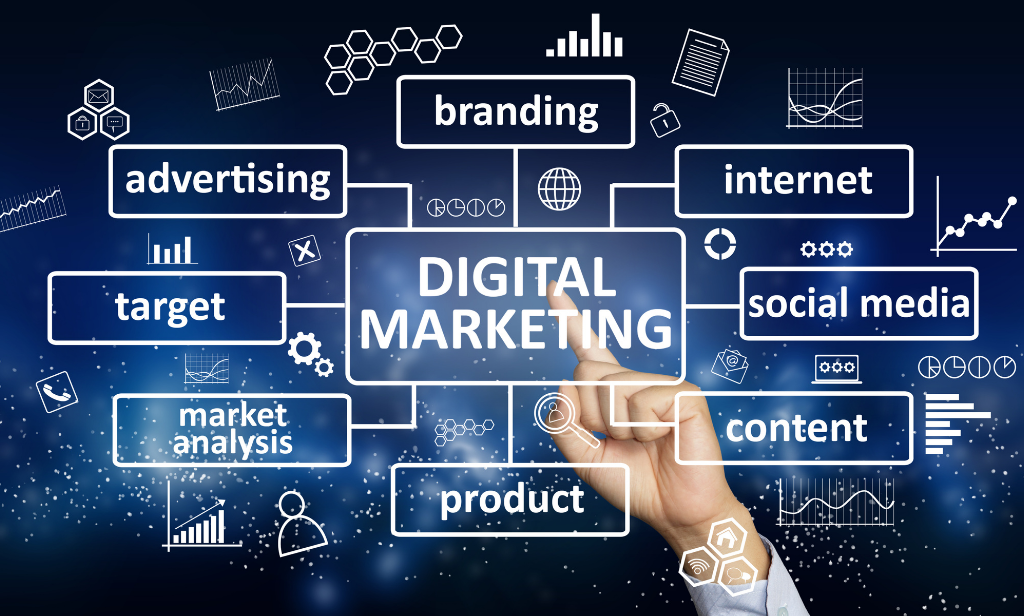

Digital marketing can provide you with a complete, end-to-end picture of all the metrics that important to your business, such as impressions, shares, views, clicks, and time on page. This is one of the most significant advantages of digital marketing. Traditional advertising has a number of limitations, the most significant of which is its lack of measurability.
Digital marketing, unlike most offline marketing initiatives, allows marketers to observe exact outcomes in real time. If you’ve ever placed an ad in a newspaper, you know how tough it is to determine how many people really flipped to that page and read your ad. There’s no way to determine for sure whether or not that ad resulted in any purchases.
Digital marketing, on the other hand, allows you to track the return on almost every facet of your marketing activities.
Some instances are as follows:
Website Visits
By employing digital analytics tools, such as HubSpot’s, you can see the precise amount of visitors who have seen your website’s homepage in real time using digital marketing.
Among other digital analytics data, you can see how many pages they viewed, what device they were using, and where they came from.
Based on the amount of individuals that visit your website, this knowledge lets you select which marketing channels to spend more or less time on. For example, if organic search accounts for only 10% of your traffic, you know you’ll need to invest some time on SEO to boost that number.
It’s tough to identify how consumers are connecting with your brand before they meet with a salesperson or make a purchase using offline marketing. You may uncover trends and patterns in people’s behaviour with digital marketing before they reach the last stage of their buyer’s journey, allowing you to make better judgments about how to attract them to your website right at the beginning of the marketing funnel.
Performance of Content and Lead Generation
Imagine you’ve created a product brochure and posted it through people’s letterboxes — that brochure is a form of content, albeit offline. The problem is that you have no idea how many people opened your brochure or how many people threw it straight into the trash.
Now imagine you had that brochure on your website instead. You can measure exactly how many people viewed the page where it’s hosted, and you can collect the contact details of those who download it by using forms. Not only can you measure how many people are engaging with your content, but you’re also generating qualified leads when people download it.
Modeling of Attribution
You can track all of your sales back to a customer’s first digital touchpoint with your company using a successful digital marketing strategy paired with the correct tools and technology.
This is known as attribution modelling, and it helps you to spot trends in how customers investigate and buy your product, allowing you to make better decisions about which aspects of your marketing strategy to focus on and which aspects of your sales cycle to improve.
Connecting the links between marketing and sales is critical – according to Aberdeen Group, organisations with good sales and marketing alignment grow at a 20% annual pace, while those with weak alignment see a 4% revenue decrease. If you can use digital technology to improve your customer’s experience through the purchase cycle, it will almost certainly benefit your company’s bottom line.
A digital marketing plan is easy to adapt and adjust.
A marketing plan takes a lot of time and effort to design. In general, you’ll stick with a plan until it’s finished, give it time to work, and then assess the outcomes. Things, however, do not always go as planned. You may discover halfway through that a calculation was erroneous, an assumption was incorrect, or that an audience did not react as planned. It’s really useful to be able to pivot or alter your plan along the road since it keeps you from having to start from scratch.
One of the many advantages of digital marketing is the ease with which you may adjust your plan. It’s a lot easier to adapt a digital marketing plan than it is to adapt a traditional marketing approach like mailers or billboard advertising. For example, if an online ad isn’t doing as well as you’d like, you may instantly change or halt it to improve outcomes.
Your conversion rate and lead quality may both benefit from digital marketing.
Because digital marketing makes it easier to track your marketing efforts, it’s also easier to improve your conversion rate. You can build stronger plans if you can assess the success of each technique. Your conversion rate will improve if you keep refining your strategies. Investing in internet marketing guarantees that everything is set up to get the most conversions possible.
Furthermore, not all leads have the same worth for your company. You may target a specific demographic with digital marketing, which will result in higher-quality leads that are more likely to become customers. Connecting your company with the most value leads will boost your conversion rate significantly.
With digital marketing, you can engage people at any level.
It’s critical to get your audience involved as soon as possible. Making a connection early in the buyer’s journey aids the lead’s progression through the customer funnel. You may do this with digital marketing from beginning to end and at any moment in between.
You can track your consumers’ whole purchase experience using online channels. Converting leads necessitates an understanding and analysis of how customers move and operate. You can monitor them along the process using digital marketing. Even if they don’t convert right away, it at least ensures they’ve established a relationship with your company.
Types of Digital Marketing
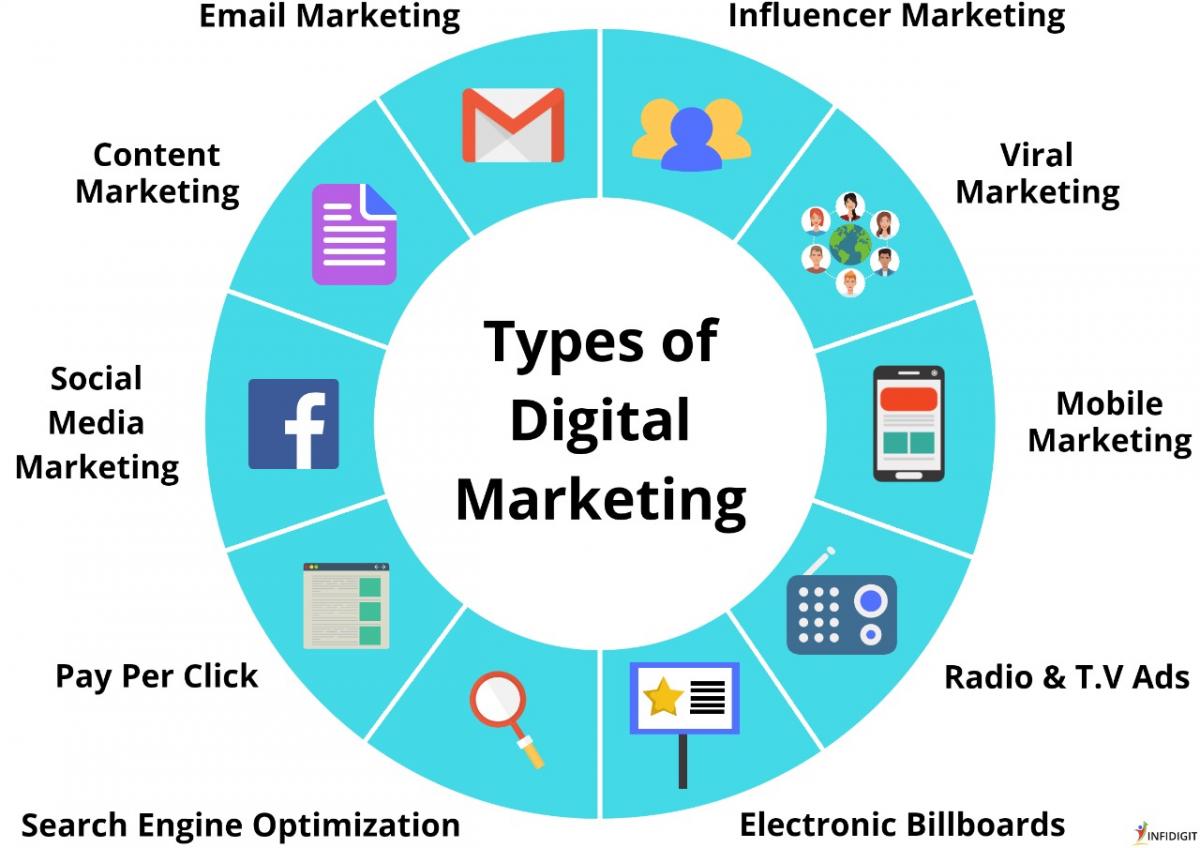

- Search Engine Optimization (SEO)
- Content Marketing
- Social Media Marketing
- Pay Per Click (PPC)
- Affiliate Marketing
- Native Advertising
- Marketing Automation
- Email Marketing
- Online PR
- Inbound Marketing
- Sponsored Content
- Search Engine Marketing (SEM)
- Instant Messaging Marketing
Search Engine Optimization (SEO)
This is the process of boosting the quantity of organic (or free) traffic to your website by optimising it to “rank” higher in search engine results pages. Websites, blogs, and infographics are among the mediums that profit from SEO.
There are several approaches to SEO that may be used to create quality visitors to your website. These are some of them:
On page SEO:
When looking at a website, this sort of SEO focuses on all of the material that is “on the page.” You may answer queries for readers and rank better on the search engine results pages (SERPs) by studying keywords for their search volume and intent (or meaning).
Off page SEO:
When it comes to optimising your website, this sort of SEO focuses on everything that happens “off the page.” “What activities that aren’t on my own website might have an impact on my ranking?” You could inquire. Inbound links, often known as backlinks, are the answer. How highly you rank for the keywords you care about is influenced by the amount of publishers who link to you and their respective “authority.” You may get the backlinks you need to advance your website up the correct SERPs by networking with other publications, producing guest articles on their websites (with a link back to your website), and creating external attention.
Technical SEO:
This sort of SEO concentrates on your website’s backend and how your pages are coded. Technical SEO techniques such as image compression, structured data, and CSS file optimization may all help your website load faster, which is a key ranking factor for search engines like Google.
Check out our case study on Canva for a real-life example of how to successfully integrate SEO into your digital marketing strategy:
Content Marketing
This word refers to the production and marketing of content assets in order to increase brand exposure, traffic, lead generation, and customer acquisition.
Do you want to learn about content marketing and apply it to your company? Visit HubSpot Academy’s free content marketing training website for more information.
The following are some of the channels that may be used in your content marketing strategy:
Blog posts:
Writing and publishing content on a corporate blog allows you to display your industry expertise while also increasing organic search traffic. As a result, you’ll have more chances to convert website visitors into sales leads for your sales staff.
Ebooks and whitepapers:
Ebooks, whitepapers, and other long-form information can help website visitors learn more. It also lets you to trade content for a reader’s contact information, creating leads and guiding individuals through the buyer’s journey for your business.
Infographics:
Readers sometimes want you to demonstrate rather than inform. Infographics are a type of visual material that aids website visitors in visualising an idea you’d like them to understand.
Audio or visual content:
Digital marketing is commonly done through television and radio. Creating video material that can be shared online or heard on the radio may dramatically expand your potential audience.
Stumped?
Social Media Marketing
This method uses social media to promote your brand and content in order to raise brand recognition, drive traffic, and create leads for your company.
If you’re new to social media, solutions like HubSpot can help you link social media sites like LinkedIn and Facebook in one location. This allows you to effortlessly plan content for several channels at the same time, as well as track metrics from the platform.
You can link your social network inboxes into HubSpot, so you can get all of your direct messages in one spot, in addition to connecting social accounts for publishing reasons.
You can utilise the following channels for social media marketing:
Facebook \Twitter \LinkedIn \Instagram
Snapchat \Pinterest
These social media channels will be used by many marketers to develop a viral campaign. A viral marketing approach involves collaborating with a well-known content producer or participating in a popular trend that is currently resonating with a large audience. The goal is to develop something worth sharing in the hopes that it will spread naturally over social media channels.
Pay Per Click (PPC)
PPC is a strategy of increasing website traffic by paying a publisher each time your ad is clicked. Google Ads is one of the most prevalent forms of PPC. It allows you to pay for top spots on Google’s search engine results pages by paying “per click” for the links you put. PPC can also be used in the following channels:
Paid ads on Facebook:
Users may pay to design a video, image post, or slideshow, which Facebook will share in the news feeds of individuals who fit your company’s target demographic.
Twitter Ads campaigns:
Users can pay to have a series of posts or profile badges placed in the news feeds of a certain audience, all aimed at achieving a specific business goal. This objective may be increased website traffic, increased Twitter followers, increased tweet interaction, or even app downloads.
Sponsored Messages on LinkedIn:
Members can pay to send messages to select LinkedIn users based on their industry and experience.
Affiliate Marketing
This is a sort of performance-based advertising in which you get compensated for promoting the products or services of others on your website. The following are examples of affiliate marketing channels:
Through the YouTube Partner Program, you may host video adverts.
Using your social media profiles to share affiliate links.
This is an example of the relatively recent influencer marketing trend. Using influencers to create a campaign may be a very successful type of affiliate marketing. Finding the proper content creators for your digital campaign might help you take it to the next level.
Native Advertising
Native advertising refers to adverts that are mostly content-driven and appear alongside non-paid content on a platform. Sponsored posts on BuzzFeed are an excellent example, but many people also perceive social media advertising to be “native” — for example, Facebook and Instagram advertising.
Marketing Automation
The software that automates your core marketing processes is known as marketing automation. Many marketing teams can automate processes that would otherwise be completed by hand, such as:
Email newsletters:
Email automation does more than just allow you to send emails to your subscribers on a regular basis. It may also help you cut and enlarge your contact list as required, ensuring that your newsletters are only sent to individuals who wish to receive them.
Social media post scheduling:
If you want to expand your company’s social media presence, you must publish regularly. Manual posting becomes a bit of a shambles as a result of this. Social media scheduling systems automate the posting of your material to your social media platforms, allowing you to focus on content planning.
Lead-nurturing workflows:
Generating leads, and converting those leads into customers, can be a long process.You can automate that process by sending leads specific emails and content once they fit certain criteria, such as when they download and open an ebook.
Campaign tracking and reporting:
People, emails, material, webpages, phone calls, and more may all be part of a marketing campaign. Marketing automation may help you organise everything you do by the campaign it’s supporting, and then track the campaign’s performance over time depending on the progress all of these components make.
Email Marketing
Companies use email marketing as a way of communicating with their audiences. Email is often used to promote content, discounts and events, as well as to direct people toward the business’s website. The types of emails you might send in an email marketing campaign include:
- Blog subscription newsletters.
- Follow-up emails to website visitors who downloaded something.
- Customer welcome emails.
- Holiday promotions to loyalty program members.
- Tips or similar series emails for customer nurturing.
Online PR
The method of obtaining earned online coverage through digital periodicals, blogs, and other content-based websites is known as online PR. It’s similar to traditional public relations, except it’s done online. You may utilise the following channels to maximise your PR efforts:
Reporter outreach via social media:
For example, talking to journalists on Twitter is a terrific method to build a connection with the press that leads to earned media possibilities for your brand.
Engaging online reviews of your company:
If someone leaves a positive or negative review of your organisation online, your first impulse may be to ignore it. Engaging corporate evaluations, on the other hand, let you personalise your brand and convey compelling messaging that safeguards your reputation.
Engaging comments on your personal website or blog:
Responding to individuals who are reading your material in the same manner you would reply to evaluations of your firm is the greatest approach to start a meaningful dialogue about your industry.
Inbound Marketing
Inbound marketing is a marketing strategy that involves attracting, engaging, and delighting consumers throughout the buyer’s journey. Every digital marketing method described above may be used as part of an inbound marketing strategy to create a customer experience that works with, not against, the consumer. Here are some classic inbound marketing vs. conventional marketing examples:
Pop-up advertisements vs. blogging
Commercial advertising vs. video marketing
Email spam vs. email contact lists
Sponsored Content
You pay another firm or organisation to generate and promote material that mentions your brand or service in some way through sponsored content.
Influencer marketing is a prominent sort of sponsored content. A brand funds an influencer in its sector to produce articles or videos linked to the company on social media using this form of sponsored content.
A blog post or article intended to emphasise a topic, service, or brand is another example of sponsored content.
Search Engine Marketing (SEM)
It’s a terrific chance for a promotion when a potential lead is looking for a product or service that is connected to yours. Paid advertising and SEO are two excellent methods for marketing your company and capturing prospective prospects. Using sponsored adverts on search engines, search engine marketing is another approach to improve website visitors. Bing Ads and Google Ads are the two most popular SEM services. These sponsored ads appear at the top of search engine results pages and provide immediate visibility. This is also a good example of native advertising that works.
Instant Messaging Marketing
Marketing your products through messaging platforms is a fast way to reach potential leads, even for those who haven’t offered up their cell phone number. It’s a simple way to let your audience know about flash sales, new products, or updates about their orders. If your customers have questions or need more information, it’s also a convenient way for them to connect to customer service. You can choose to send messages directly to a mobile phone by text or through messages on platforms like Facebook Messenger or WhatsApp.
What is the role of a digital marketer?


Digital marketers are in responsible of raising brand recognition and generating leads across all of a company’s digital platforms, both free and paid. Social media, the company’s own website, search engine rankings, email, display advertising, and the company’s blog are all examples of these channels.
To accurately assess the company’s success across all channels, the digital marketer normally focuses on a distinct key performance indicator (KPI) for each one. The “organic traffic” of a website is measured by a digital marketer in charge of SEO, for example. In small businesses, one generalist may be in charge of many of the above-mentioned digital marketing strategies at the same time. In bigger firms, these methods are carried out by a team of professionals who each focus on one or two of the brand’s attributes.
Here are some examples of these specialists:
SEO Manager
Main KPIs: Organic traffic
In a nutshell, SEO managers help businesses rank higher on Google. This individual may work directly with content producers to ensure that the material they generate performs well on Google, even if the firm also distributes this content on social media, using a range of search engine optimization techniques.
Content Marketing Specialist
Main KPIs: Time on page, overall blog traffic, YouTube channel subscribers
Digital content creators are content marketing gurus. They maintain track of the company’s blogging calendar on a regular basis and devise a content plan that incorporates video. These experts frequently collaborate with colleagues from other departments to ensure that the goods and campaigns that the company offers are accompanied with promotional material across all digital channels.
Social Media Manager
Main KPIs: Follows, Impressions, Shares
The title of a social media manager is self-evident, but the social networks they administer for the organisation is determined by the industry. Above all, social media managers develop a publishing schedule for textual and visual material produced by the organisation. This person may also collaborate with the content marketing specialist to build a plan for which kind of material to share on which social media platforms.
(Note: “impressions” refers to the number of times a business’s postings appear in a user’s newsfeed, as defined by the KPIs above.)
Marketing Automation Coordinator
Main KPIs: Email open rate, campaign click-through rate, lead-generation (conversion) rate
The marketing automation coordinator assists in the selection and management of technologies that allows the whole marketing team to better understand client behaviour and track business progress. Because many of the marketing operations outlined above may be carried out independently, it’s critical to have someone who can aggregate these digital actions into unique campaigns and track the effectiveness of each campaign.
Inbound Marketing vs. Digital Marketing: Which Is It?
Inbound marketing is a strategy for attracting, engaging, and delighting consumers through the usage of digital marketing materials. Digital marketing, on the other hand, is a catch-all word for any type of internet marketing strategy, regardless of whether it’s deemed inbound or outbound.
Although digital marketing is frequently likened to inbound marketing, it does not distinguish between the two approaches. Inbound marketing is more of a strategy than an umbrella phrase for any marketing that incorporates internet communication.
READ- What exactly is a blog? — The Terms Blog, Blogging, and Blogger are Defined
.
Outbound digital marketing methods seek to get a marketing message in front of as many individuals as possible in the online world, regardless of whether it’s relevant or welcoming. For example, the flashy banner advertising that adorn the tops of many websites attempt to force a product or promotion on those who aren’t ready for it.
Marketers who utilise digital inbound methods, on the other hand, use online content to lure their target customers to their websites by delivering useful goods. A blog, which allows your website to capitalise on the phrases that your target buyers are searching for, is one of the simplest yet most powerful inbound digital marketing tools.
Is digital marketing effective for all types of businesses?
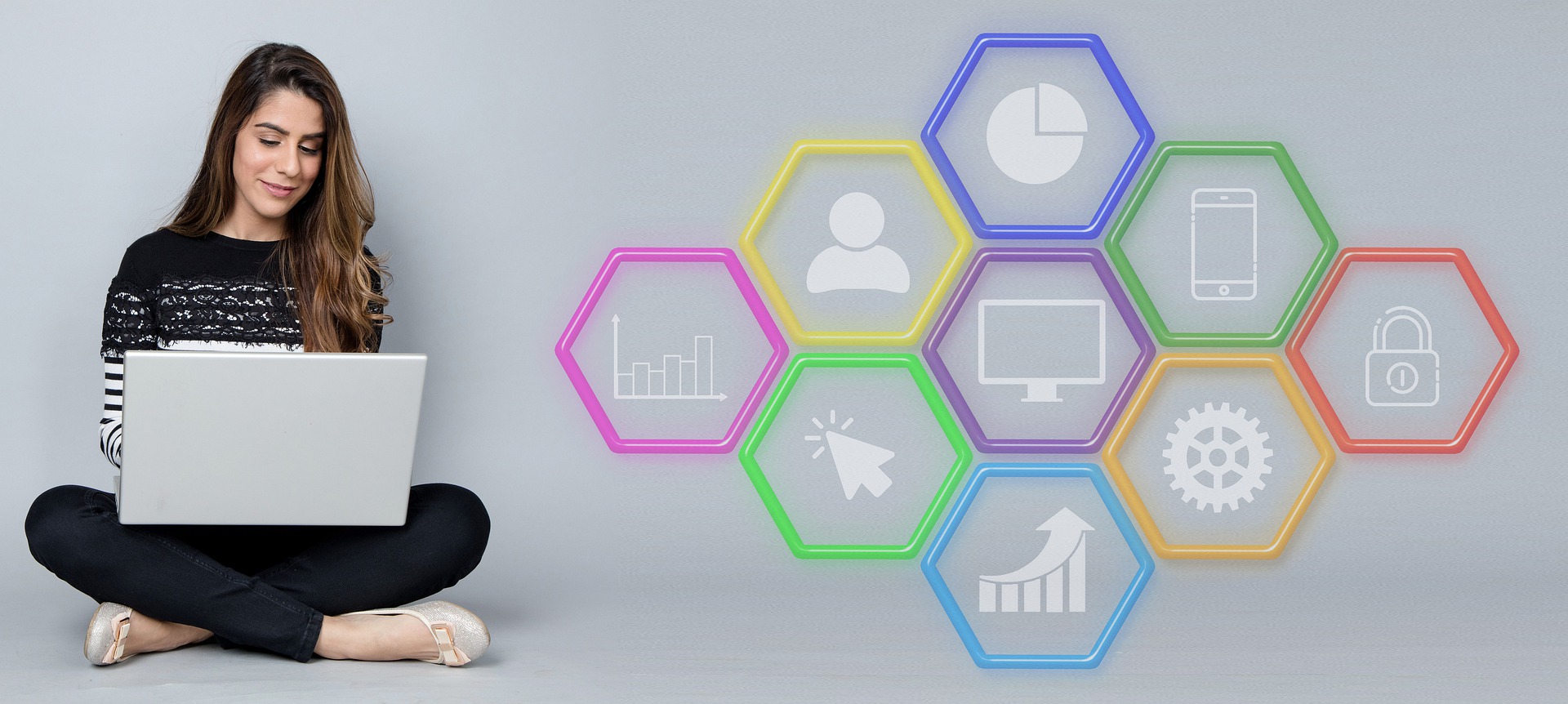

Any firm in any field may benefit from digital marketing. Regardless of what your firm offers, digital marketing still entails constructing buyer personas to understand the needs of your target audience and producing meaningful online content. That isn’t to argue that every company should use a digital marketing plan in the same manner.
B2B Digital Marketing
If your firm is B2B, your digital marketing efforts are most likely focused on online lead generation, with the ultimate objective of getting someone to talk with a salesperson. As a result, the goal of your marketing plan is to use your website and other digital channels to acquire and convert the best quality leads for your salespeople.
You’ll probably opt to focus your efforts on business-focused platforms like LinkedIn, where your demographic spends time online, in addition to your website.
B2C Digital Marketing
If your firm is B2C, depending on the price range of your items, the objective of your digital marketing activities is most likely to attract visitors to your website and convert them into customers without ever having to talk with a salesperson.
As a result, you’re probably less focused on ‘leads’ in the conventional sense, and more focused on creating an expedited buyer’s journey, from the minute someone visits your website to the moment they complete a purchase. This means your product will likely appear in your content earlier in the marketing funnel than it would for a B2B company, and you may need to utilise stronger calls-to-action (CTAs).
For B2C companies, channels like Instagram and Pinterest can often be more valuable than business-focused platforms like LinkedIn.
What types of digital content should I create?


The type of content you develop is determined by the demands of your audience at various phases of the buyer’s journey. To understand what your audience’s goals and issues are in connection to your business, start by constructing buyer personas (use these free templates or try makemypersona.com). On a fundamental level, your web material should attempt to assist people in achieving their objectives and overcoming obstacles.
After that, consider when they’re most likely to be ready to consume this material in respect to where they are in their buyer’s journey. This is referred to as content mapping.
The purpose of content mapping is to target material based on:
Buyer personas are used to describe the qualities of the person who will consume it.
What percentage of that individual is on the verge of making a purchase (i.e., their lifecycle stage).
There are many various formats to test when it comes to the format of your material. At each point of the buyer’s journey, we advocate employing the following options:
Awareness Stage
Blog posts.
When combined with a solid SEO and keyword strategy, it’s a great way to boost organic traffic.
Infographics.
They’re very shareable, which means they’ll help you be noticed on social media if people share your material.
Short videos.
Again, videos are incredibly shareable, and putting them on places like YouTube may help your company reach new consumers.
Consideration Stage
Ebooks.
They’re great for lead generation since they’re usually longer than a blog post or an infographic, so people are more willing to give their contact information in return for it.
Research reports
Again, this is a high-value piece of content that is excellent for generating leads. However, because research studies and new data for your business are frequently picked up by the media or industry press, they may also help with the awareness stage.
Webinars
Webinars are an effective consideration stage content type because they provide more thorough material than a blog post or a short video since they are a more extensive, interactive kind of video content.
Decision Stage
Case studies.
Detailed case studies on your website may be a beneficial sort of content for individuals who are ready to buy, as it allows you to favourably influence their choice.
Testimonials.
If case studies aren’t right for your company, brief testimonials on your website might be a fantastic substitute. Consider testimonials in a broader sense for B2C brands. If you’re a clothing company, these may be photographs showing how other people dressed a shirt or dress, taken from a branded hashtag where anybody can contribute.
How to Do Digital Marketing
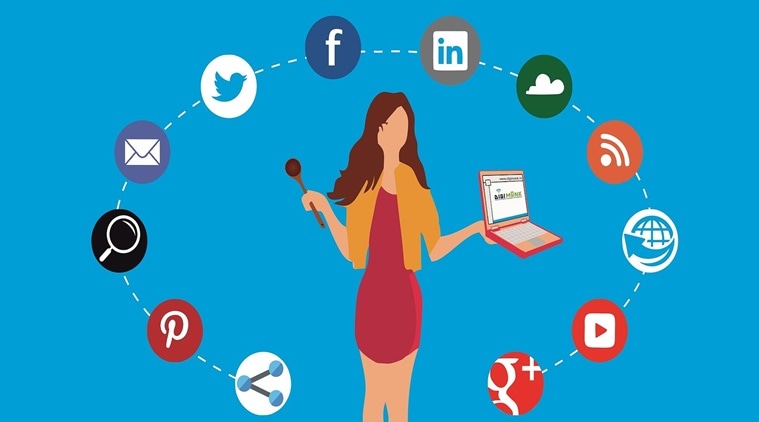

- Define your objectives.
- Determine who you want to reach.
- Set aside money for each digital channel.
- Strike a solid mix between paid and unpaid internet marketing tactics.
- Make material that is interesting to read.
- Make your digital assets mobile-friendly.
- Perform a keyword search.
- Iterate based on the data you’ve gathered.
Define your objectives.
When you’re initially starting out with digital marketing, it’s vital that you establish and define your goals, because your approach will be tailored to those goals. If you want to raise brand exposure, for example, you should focus on reaching out to new audiences using social media.
Alternatively, if you want to boost sales of a certain product, it’s more vital to work on SEO and content optimization to attract potential consumers to your site in the first place. If you want to increase sales, you may also use PPC campaigns to boost visitors through sponsored advertisements.
Whatever the situation may be, developing a digital marketing plan is much easier after you’ve established your company’s primary objectives.
Determine who you want to reach
One of the major advantages of digital marketing is the ability to target particular audiences – but you can’t take use of that benefit until you first identify your target audience.
Of course, depending on the channel or goal(s) you have for a particular product or campaign, your target audience may change.
For example, you may have observed that the majority of your Instagram audience is younger and enjoys hilarious memes and short videos, but your LinkedIn audience includes older professionals seeking more tactical advise. To appeal to these various target audiences, you’ll need to change your material.
If you’re starting from scratch, have a look at How to Find Your Dream Job.
Set aside money for each digital channel
The budget you choose is mostly determined by the parts of digital marketing you want to include in your plan.
The good news is that if you’re focused on inbound strategies like SEO, social networking, and content production for an existing website, you won’t require much money. The major focus of inbound marketing is on providing high-quality content that your audience will want to read, and the only investment you’ll need is your time unless you want to outsource the task.
Start by hosting a website and using HubSpot’s content management system to create content.
For those on a budget, you may get started with WordPress hosted on WP Engine, a basic theme from StudioPress, and the Elementor Website Builder for WordPress to design your site without coding.
There is obviously some cost associated with outbound strategies such as web advertising and acquiring email lists. What it costs is determined on the level of visibility you desire as a result of the advertisement.
For example, if you use Google AdWords to implement PPC, you’ll compete with other businesses in your field to appear at the top of Google’s search results for terms related to your business.This might be quite reasonable or incredibly expensive depending on the competition of the term, which is why it’s a good idea to work on growing your organic reach as well.
Strike a solid mix between paid and unpaid internet marketing tactics.
To be genuinely effective, a digital marketing plan will almost certainly include both paid and free elements.
For example, if you spend time creating comprehensive buyer personas to identify your audience’s needs and then focus on creating high-quality online content to attract and convert them, you’ll likely see strong results within the first six months, even if you only spend a small amount on advertising.
If paid advertising is included in your digital strategy, though, the effects may be much faster.
Finally, for more long-term, sustainable success, it’s advised that you focus on expanding your organic (or “free”) reach through content, SEO, and social media. When in doubt, try both and iterate as you learn which channels — sponsored or free — work best for your business.
Make material that is interesting to read
It’s time to start developing content for the various platforms you’ll employ once you’ve identified your target demographic and established a budget. Social media postings, blog articles, PPC advertisements, sponsored content, email marketing newsletters, and other forms of content can be used.
Naturally, any material you develop for your audience should be fascinating and engaging, as the goal of marketing content is to raise brand recognition and boost lead generation.
Make your digital assets mobile-friendly


Mobile marketing is another important aspect of digital marketing. In reality, smartphone usage accounts for 69 percent of time spent viewing digital media in the United States, while desktop-based digital media consumption accounts for less than half — and the United States remains mobile’s least ardent supporter when compared to other nations.
This implies that mobile-friendly digital advertisements, site pages, social media photographs, and other digital assets are critical. If your business has a mobile app that allows people to interact with your brand or shop your items, it’s considered digital marketing.
Those who interact with your firm online via mobile devices should have the same favourable experience as those who interact with your company on a desktop. This entails using a mobile-friendly or responsive website design to make surfing on mobile devices more user-friendly. It might also involve lowering the length of your lead generating forms to make it easier for individuals to download your material on the move. When it comes to social media photographs, keep in mind that image dimensions are reduced on mobile devices, and text might be chopped off.
There are several methods to optimise your digital marketing assets for mobile consumers, and it’s critical to evaluate how the experience will transfer on mobile devices when adopting any digital marketing plan. By keeping this in mind at all times, you’ll be able to create digital experiences that appeal to your target audience and, as a consequence, get the outcomes you want.
Perform a keyword search
Digital marketing is all about reaching out to specific audiences with customised content, which is impossible to do without thorough keyword research.
Keyword research is essential for optimising your website and content for SEO and ensuring that people can find your company via search engines. Additionally, social media keyword research may aid in the promotion of your products or services across a variety of social media platforms.
Even if you don’t have a full-time SEO specialist on staff, keyword research is still necessary. Make a list of high-performing keywords related to your products or services, and think about long-tail variants for more options.
Iterate based on the data you’ve gathered
Finally, it’s critical for your team to understand how to pivot depending on data if you want to develop a long-term digital marketing plan.
For example, you could discover after a few months that your Instagram following isn’t as engaged in your material as it once was, but they adore what you’re doing on Twitter. Sure, this might be a chance to rethink your Instagram approach as a whole, but it could also indicate that your audience prefers to consume branded material through a different channel.
Alternatively, you may discover that an older web page isn’t receiving as much traffic as it formerly did. To guarantee that visitors are accessing the most up-to-date, relevant material for their requirements, you may want to consider upgrading or removing the page completely.
I’m willing to give digital marketing a go. So, what’s next?
If you’re already performing digital marketing, you’re probably reaching at least part of your target demographic online. You may almost certainly think of some aspects of your plan that could be improved.
That’s why, whether you’re a total newbie or have a bit more expertise, we’ve designed a step-by-step guide to help you construct a really effective digital marketing plan.
Let’s have a look at some digital marketing examples that are likely to inspire you.
Digital Marketing Examples


- Lego’s Rebuild the World Campaign
- Dove’s Real Beauty Campaign
- Jennifer Lopez’s #InTheMorningChallenge
- Always’ #LikeAGirl Campaign
Lego’s Rebuild the World Campaign


Because it speaks something about the brand, this is an excellent example of a digital marketing effort. As a method to engage with its audience, Lego takes a stand on critical global issues in this ad.
It is becoming increasingly vital for businesses to debate global concerns and demonstrate alignment with their consumers in this way in today’s world. This campaign’s main goal is to spread the brand’s storey and messaging.
This was a smart move for the toy company, given that 89 percent of customers prefer to purchase from companies who reflect their beliefs.
Dove’s Reverse Selfie Campaign


Dove chose to deliver a statement as we continue to study how social media affects children, particularly young females. The Reverse Selfie campaign depicts a teen girl doing the exact opposite of everything she did to prepare for a selfie and alter the image. The goal is to raise awareness about how social media can harm one’s self-esteem.
This is a great illustration of what marketing material might look like when you really know who your target audience is. Dove was able to call attention to an often neglected effect of the expansion of social media by understanding its audience of actual women, many of whom were mothers.
Jennifer Lopez’s #InTheMorningChallenge


Jennifer Lopez launched a dancing challenge to promote her new single in this social media campaign. Fans would execute the same dance in their pyjamas and in costume for this challenge.
The video had over 13 million views and 5,000 comments, indicating that it was a successful social media campaign.
Using social media to engage your audience and encourage them to interact with your business one-on-one is a terrific approach to do so.
. Always’ #DayoftheGirl Campaign
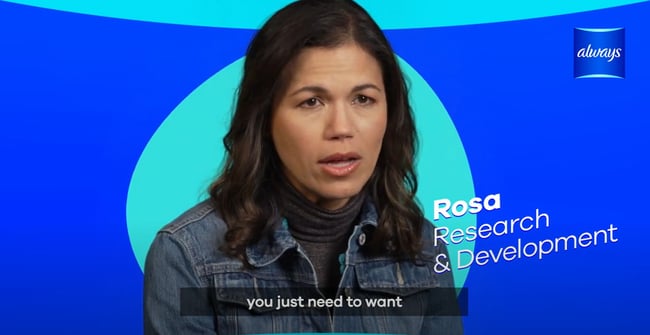

This is another emotive marketing-focused digital campaign. Always used this campaign to ask their own staff what advice they would provide to young women. The women share their wisdom in a way that will encourage everyone on International Day of the Girl, an annual celebration that takes place in October.
Again, the product isn’t addressed much in this campaign, but that isn’t the goal. The goal of this digital campaign was to motivate and inspire the target demographic. They might reach even more individuals with that message, increasing brand recognition and demonstrating to their audience that the company shares their values.
Embrace digital marketing as part of your overall strategy.
Any time you can connect with your audience, you have a chance to convert a lead or gain a customer. Digital marketing expands those possibilities by allowing you to reach out to potential customers through a multitude of channels. It’s an excellent tool to market your business, service, or product, whether it’s through social media platforms, websites, text messaging, or any other online outlet.
ALSO READ-👇👇👇

